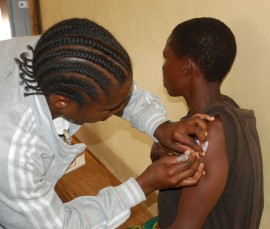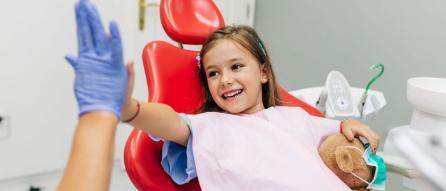
Impacts on global health
Driving change and investment in international policy on rabies post-exposure prophylaxis
Canine rabies is an infectious viral disease that is universally fatal following the onset of clinical symptoms. Despite being wholly preventable through vaccination, it is responsible for up to 59,000 human deaths each year. Rabies post-exposure prophylaxis (PEP)—given to people within 24 hours of being bitten by potentially infected dogs—is a vital tool for reducing rabies deaths worldwide. However, access to this life-saving treatment is restricted by a lack of consensus, and thus investment, on which treatment regimen to use in specific settings.
University of Glasgow research provided epidemiological and cost-effectiveness modelling that substantiated the revised World Health Organization (WHO) policy on rabies PEP regimens, which recommended a 1-week, two-site intradermal injection regimen as the most cost-effective approach. At the same time, University of Glasgow researchers worked with the international vaccines funding consortium (Gavi, the Vaccine Alliance) to model different investment scenarios in rabies PEP, addressing uncertainties on their impact. The streamlined WHO policy, together with the additional modelling for Gavi, was instrumental to the 2018 decision taken by Gavi to add rabies PEP to their 2021–2025 investment strategy, supporting access to this intervention across 57 developing countries. Multiple countries with endemic rabies have now revised, or are in the process of revising, their rabies PEP guidelines to bring them into line with WHO recommendations.
A new first-in-class drug transforms treatment for heart failure, improves patient outcomes, and reduces hospitalisation
Heart failure (HF) is a major cause of hospitalisation and premature death worldwide, with around 50% of all patients experiencing HF with reduced ejection fraction (HFrEF)—a condition where insufficient blood is pumped from the heart’s left side. Angiotensin-converting enzyme (ACE) inhibitors were considered the gold-standard treatment for HFrEF; however, they only partially improve symptoms, highlighting the need for new and improved drugs. Research conducted by Professor John McMurray in the Institute of Cardiovascular & Medical Sciences had demonstrated the potential therapeutic benefit of inhibiting an enzyme called neprilysin. Consequently, global healthcare company Novartis asked Prof McMurray to lead clinical studies of its novel angiotensin receptor–neprilysin inhibitor (sacubitril/valsartan; trade name, Entresto) as a first-in-class treatment for HFrEF. The phase 3 PARADIGM-HF trial demonstrated that Entresto considerably outperforms ACE inhibitors for this indication. Novartis used the PARADIGM-HF data to support applications for marketing approvals of Entresto in 112 countries. In addition, the world’s most influential cardiovascular societies have given Entresto their highest-level recommendation in clinical guidelines, based on key evidence from PARADIGM-HF. Entresto is now used to treat over 1.4 million patients worldwide, reducing rates of hospitalisation and premature death. Over USD4 billion has been generated in global sales of Entresto since 2015.
Childsmile evaluation: shaping national child oral health improvement programmes across the world
Although preventable, tooth decay is a serious public health issue that affects 520 million children worldwide. Development of this condition is strongly linked to socioeconomic and health inequalities, with associated symptoms and hospital admissions potentially limiting educational attendance and attainment. Research led by Prof Lorna Macpherson at the Glasgow Dental School supported the development, implementation and evaluation of Childsmile. This cost-effective, multicomponent community-based child oral health improvement programme was designed to tackle the problem of tooth decay and reduce inequalities among children in Scotland through targeted interventions such as nursery supervised toothbrushing and fluoride varnish applications. Rates of tooth decay among 5-year-olds have fallen by 43% since the initiation of Childsmile in 2006, with the programme particularly effective among socially disadvantaged groups. Consequently, the Childsmile approach has become the leading model for child oral health improvement programmes in the UK and internationally. Childsmile components have been adopted in Chile, England, Israel, Malawi, the Netherlands, countries of Southeastern Europe and Vanuatu. For example, Israel piloted nursery supervised toothbrushing in response to a cost analysis conducted by the University of Glasgow team, with the number of nurseries participating in this activity rising from 627 in 2015 to 2,200 in 2018. The Israeli Ministry of Health subsequently adopted nursery supervised toothbrushing as part of its national dental service for children living in disadvantaged towns and cities. In 2019, the European Commission designated the Childsmile methodology as public health best practice.




